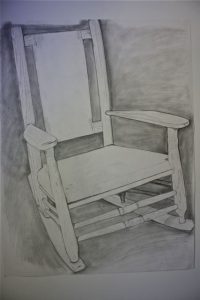It’s not Your Father’s Voc-Tech Program
I attended high school in the 80’s, when students had a choice – college prep or vocational education. Both programs remained parallel and separate through the early 21st Century and both initially served students fairly well but not perfectly. Vocational programs didn’t keep up with job market demands and college prep programs left many with high debts and few work options.
Today’s job market is very different both because skills traditionally associated with college prep are necessary for jobs that had previously been considered “vocational” (consider the technology in today’s heating and cooling systems) and because tomorrow’s workers are expected to change positions and roles far more frequently than in the past. Since the mission of K-12 education includes preparing students for life after high school, it has become necessary to rethink the experiences students have in school.
Launched with the support of a $2 million grant provided by JPMorgan Chase to only 10 states in the country, Rhode Island has begun to develop a plan to support high quality career pathways for Rhode Island youth. Their initiative, known as Prepare Rhode Island, provides guidance to districts to design multiple pathways for high school students. Smithfield High School has responded by strengthening and/or developing CTE programs that are available to both Smithfield residents and nonresidents. Currently, we offer an Academy of Finance, an Early Childhood Education Academy, and an Engineering Technology Academy. Next year, a program for Criminal Justice and Cybersecurity will be added. While our primary mission remains to provide programs to Smithfield residents, students outside of Smithfield can apply to CTE programs at SHS and tuitions are paid by their sending districts. Information about these programs can be found at http://cte.smithfield-ps.org/.
CTE programs run alongside other high school offerings and do not limit participating students to the specific career pathways chosen. Skills learned are transferable and valuable. In addition, the establishing of various pathways in Smithfield has enabled a variety of electives that may be available to all students. Consider the following courses, among many others offered at SHS:
- Introduction to Design & Production (Industrial Design)
- Food, Nutrition and Wellness
- Law I – Law & Society
- Introduction to Sports Marketing
In addition to formal CTE programs, Prepare RI advocates for and supports career exploration and readiness opportunities, establishes partnerships with Rhode Island businesses, expands the availability of advanced courses, and provides for computer science learning opportunities for RI schools. As I write, I am attending the first Prepare RI Summit, joined by hundreds of RI educators, including several from Smithfield, who are choosing to spend a gorgeous October Saturday learning about how to develop engaging programs for RI students and garner resources to support these programs.
Below are a list of some resources I invite interested teachers to ask me about or to work with their principal to contact directly:
- SENEDIA – The Southeastern New England Defense Industry Alliance (SENEDIA) focuses on undersea technology, cybersecurity, and other defense technologies. Programs include a partnership with JASON Learning that features RI based defense industry career role models and a teacher externship program in which teachers gain experience in a workplace associated with the defense industry. Linda Larsen is the education outreach coordinator and can be reached at LLarsen@SENEDIA.org or 418-0600.
- Junior Achievement Rhode Island – JA is well known but many may not know what programs they are supporting in 2017. Their elementary programs include 6 themes: ourselves, our families, our community, our city, our region, and our nation. They provide PD to teachers and provide curriculum and school year support. JA Inspire introduces 8th grade students to a variety of career opportunities in RI and includes a career exploration fair. Contact Joann Johnson at joann.johnson@ja.org or visit jarhodeislnd.org.
- Project Lead the Way – PLTW offers specific curriculum and training for biomedical engineering, engineering, and computer science units in both middle and high school. In addition, they offer an elementary program called “Launch,” and their middle school program is referred to as “Gateway.” Further information can be gained by contacting Suzanne Snow at ssnow@pltw.org or by visiting www.pltw.org .
- IncubatorEDU – full year entrepreneurship experience – Students develop their own product or service and have access to real entrepreneurs that serve as mentors. The program requires one teacher to get trained (2 full days in Summer 2018), have access to a person that serves as a community liaison. Contact Daniela Fairchild, Director of Education at the RI Office of Innovation. See also http://incubatoredu.org or speak to someone at CHARIHO who has this program currently.
Prepare RI also supports course choice, including dual and concurrent enrollment in college level courses, and has initiated an advanced course network to provide students access to all courses throughout the network.
Clearly, Rhode Island has embarked on an ambitious path toward individualizing and broadening students’ experiences in high schools through vocational programming that is most definitely not your father’s voc-tech.








